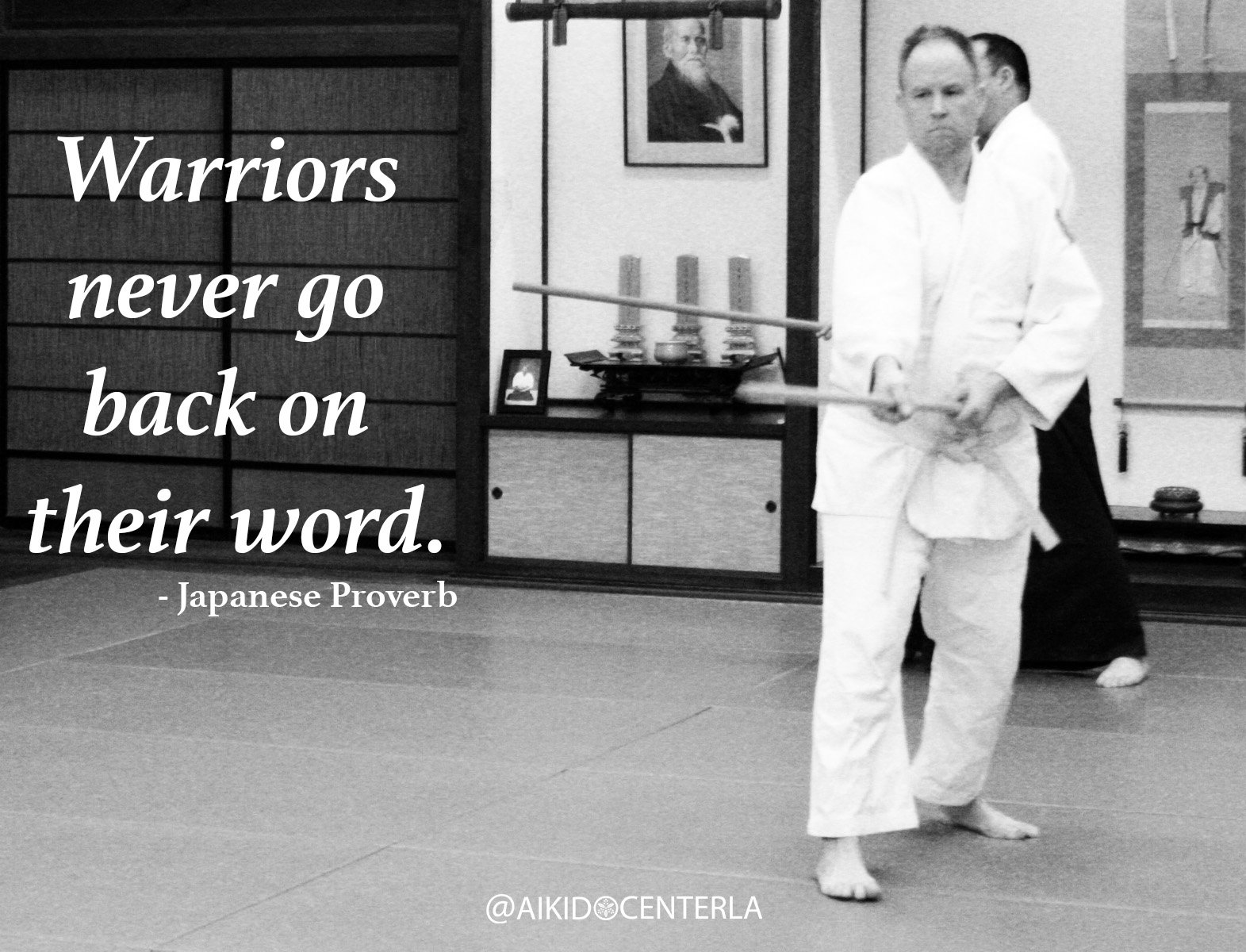A good martial artist has to have hara wo kimeru (腹を決める) or “resolve.” Resolve in the Japanese sense means “to decide in your abdomen” or in other words have “guts.” Having guts means that we have the intestinal fortitude to see something through until its end. Long ago, a young samurai and his bride-to-be were taking a walk through the forest when they were attacked by a tiger. The samurai fought fiercely trying to protect his bride-to-be from the tiger. However, at one point, the tiger lunged at the bride-to-be and the samurai wasn’t able to save her. After her death, the samurai was overcome with sadness and vowed revenge and was resolved to seek out the tiger and kill it. Once he recovered from his wounds, he took his bow and arrow and went hunting for the tiger. After months of searching, the samurai finally saw a sleeping tiger whose stripes looked like the tiger that had killed his bride-to-be. Quietly he snuck up on the tiger, focused his mind, took a deep breath, and drew his bow. With great determination, he pulled the bow back stronger than he had ever had before. He released the arrow and it hit the sleeping tiger directly in the heart. Even as the arrow pierced the tiger, it didn’t move at all. As he slowly approached his bride-to-be’s killer, he realized that he had shot his arrow deeply into a striped colored rock which happened to look like a sleeping tiger. Hearing his story, everyone in the village began to talk about how strong he was because he could pierce stone with his arrow and people wanted to see him do it again. However, no matter how many times he tried, his arrows kept bouncing off the rock. In the past, the samurai’s resolve to avenge his bride-to-be’s murder had been so profound that he was actually able to physically pierce a stone with an arrow. However, now that he knew it was just a rock, he was unable to repeat the same feat. Martial arts training will have its ups and downs - no person’s journey is immune to this. Without resolve, every little obstacle could cause us to quit and nothing in life will be achieved. With the power of resolve, we will eventually succeed at whatever it is we set our minds to and that’s why a good martial artist always has to have resolve.
Today’s goal: Be resolved - don’t let anything stand in your way.
Watch this video to better understand resolve






















